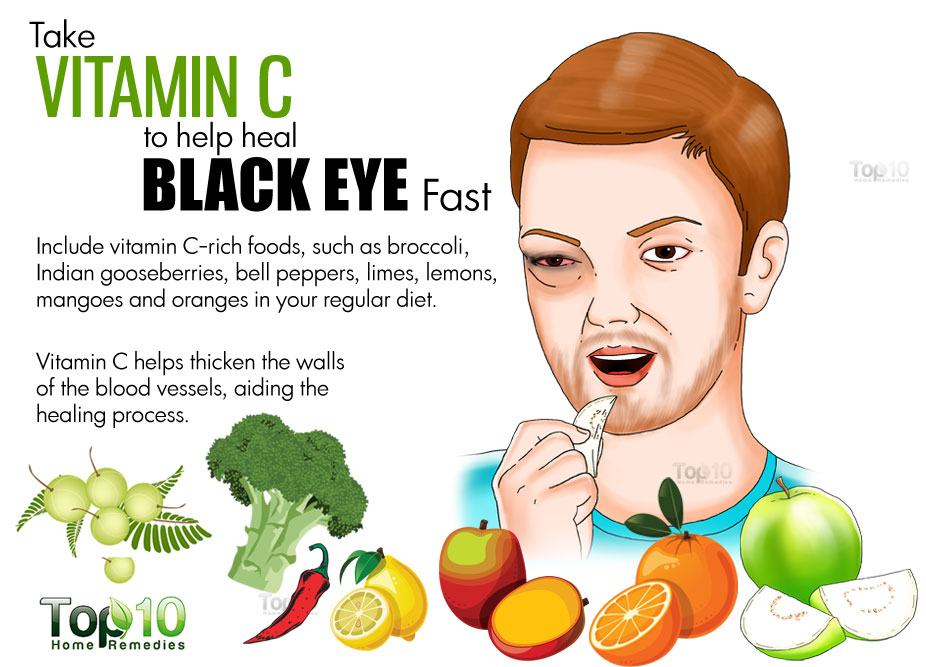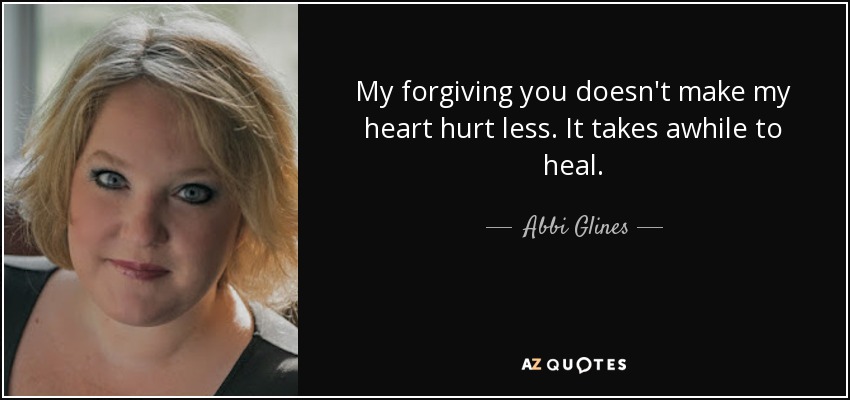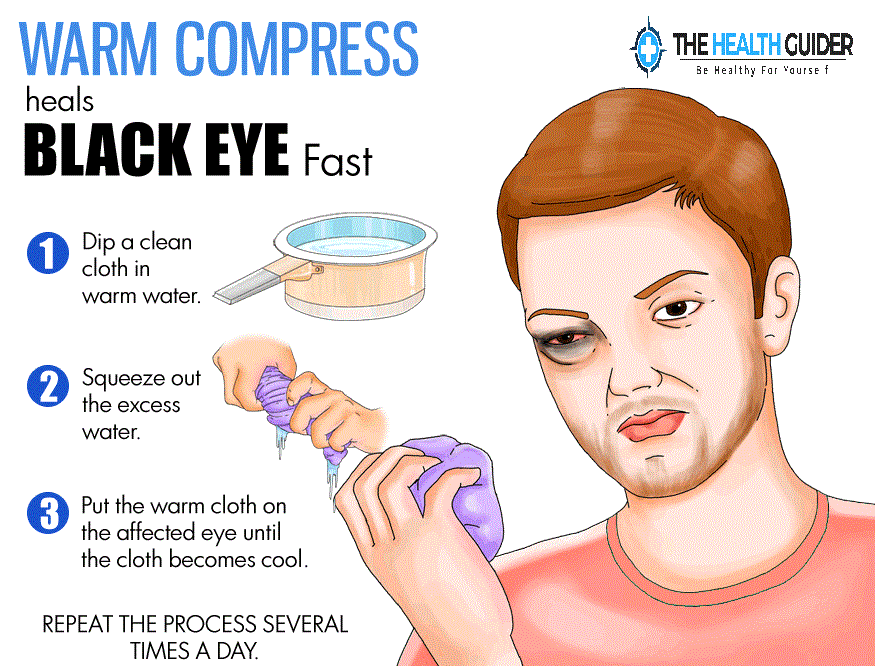How Long for a Black Eye to Heal: Home Remedies and Healing Timeline
How long does it take for a black eye to heal? Discover effective home remedies and the typical healing timeline for a black eye, plus signs that require medical attention.
Understanding Black Eyes: Causes and Symptoms
A black eye is a bruise that develops around the eye, typically caused by a blow to the face or head. It occurs when blood pools under the skin in the eye area, resulting in swelling and discoloration. While black eyes are generally not a serious condition, they can be a sign of a more severe injury, such as a skull fracture. It’s crucial to be aware of the symptoms that may require medical attention.
Home Remedies for Treating Black Eyes
If you have a minor black eye, there are several home remedies you can try to help alleviate the symptoms and speed up the healing process:
Ice Application
Apply ice to the affected area within the first 24-48 hours of the injury. This helps slow down blood flow to the area, reducing the amount of blood that pools under the skin. Ice also helps decrease swelling and pain. To use this remedy, place ice cubes in a plastic bag, wrap it in a clean towel, and apply it to the eye area for 10-20 minutes, repeating several times a day for 1-2 days.

Warm Compresses
After the initial swelling has gone down, typically after a few days, you can use warm compresses to help increase blood flow to the area and promote healing. To do this, soak a small towel in warm water, wring it out, and apply it to the eye area for 10-15 minutes, several times a day.
Pain Medication
Over-the-counter pain medications, such as acetaminophen or ibuprofen, can help alleviate the pain and discomfort associated with a black eye. Be sure to follow the dosage instructions on the label.
Healing Timeline for a Black Eye
The healing timeline for a black eye can vary, but typically follows these stages:
Initial Injury (0-2 Days)
In the first 24-48 hours after the injury, the area around the eye will appear swollen and discolored, ranging from a reddish-purple to a deep bluish-black color.
Swelling and Discoloration (2-7 Days)
The swelling and discoloration will typically peak within 2-7 days after the injury. The bruise may continue to change color, becoming more yellowish-green as it heals.

Gradual Healing (7-14 Days)
Over the next 1-2 weeks, the swelling and discoloration will gradually subside, and the black eye will begin to heal.
Full Healing (14-21 Days)
In most cases, a black eye will fully heal within 2-3 weeks, with the swelling and discoloration completely disappearing.
When to Seek Medical Attention
While most black eyes can be treated at home, there are certain symptoms that may indicate a more serious injury and require medical attention:
Vision Changes
If you experience vision changes, such as double vision, loss of vision, or seeing flashing lights or halos, seek immediate medical care.
Severe Pain or Swelling
If you have severe pain or swelling that does not improve with home treatment, or if the area around your eye is warm or leaking pus, consult your healthcare provider.
Head Injury Concerns
If you have a headache that does not go away, or if you have bruising around both eyes, it may be a sign of a more serious head injury, and you should seek medical attention.

Preventing and Reducing Black Eyes
While you can’t always prevent a black eye, there are some steps you can take to reduce the risk and severity of a black eye:
Wear Protective Gear
If you participate in activities where you’re at risk of facial injuries, such as sports or certain types of work, wear appropriate protective gear, such as helmets or face shields.
Avoid Aspirin
Aspirin can increase the risk of bleeding and make the bruising worse, so it’s best to avoid taking it unless prescribed by your doctor.
Treat Injuries Promptly
If you do sustain a blow to the face, seek medical attention and start home treatment as soon as possible to help minimize the severity of the black eye.
Conclusion
A black eye is a common injury that can be treated effectively at home with ice, warm compresses, and over-the-counter pain medication. However, it’s essential to be aware of the symptoms that may require medical attention, such as vision changes or severe pain. By understanding the healing timeline and following the proper home remedies, you can help reduce the severity and duration of a black eye.

Black eye – NHS
A black eye is bruising and swelling around your eye, usually caused by a blow to the area, such as a punch or fall. It should get better within 2 to 3 weeks.
How to ease a black eye yourself
Do
gently hold an ice pack (or a bag of frozen peas wrapped in a cloth) to the area around your eye for about 10 to 20 minutes at a time, and repeat regularly during the first 1 to 2 days
take painkillers such as paracetamol or ibuprofen for any pain
after the first 2 days, gently apply a warm (not hot) heat pack or cloth to the area around your eye regularly during the day
Don’t
do not take aspirin, unless prescribed by a doctor, as this can make the bruising worse
do not press or rub the area around your eye
do not put ice directly on your skin
Urgent advice: Ask for an urgent GP appointment or call 111 if:
- you have severe pain or swelling
- you have a headache that does not go away, or blurry vision
- the area around your eye is warm or leaking pus
- your temperature is very high, or you feel hot and shivery
- you’re taking blood-thinning medicine (such as warfarin)
- you have a bleeding disorder (such as haemophilia)
Non-urgent advice: See a GP if:
- the black eye does not go away within 3 weeks
Urgent advice: Go to A&E if:
- there’s blood visible in your eye
- you have an irregularly shaped pupil (the black dot at the centre of the eye)
- you had a blow to the head and have bruising around both eyes
- you have problems with your vision, such as double vision, loss of vision, seeing flashing light, halos or shadows, or pain when looking at a bright light
- you cannot move your eye
Page last reviewed: 26 October 2020
Next review due: 26 October 2023
Home Remedies for Black Eyes, Plus How Long They Take to Heal
We include products we think are useful for our readers. If you buy through links on this page, we may earn a small commission Here’s our process.
If you buy through links on this page, we may earn a small commission Here’s our process.
Healthline only shows you brands and products that we stand behind.
Our team thoroughly researches and evaluates the recommendations we make on our site. To establish that the product manufacturers addressed safety and efficacy standards, we:
- Evaluate ingredients and composition: Do they have the potential to cause harm?
- Fact-check all health claims: Do they align with the current body of scientific evidence?
- Assess the brand: Does it operate with integrity and adhere to industry best practices?
We do the research so you can find trusted products for your health and wellness.
Read more about our vetting process.
Was this helpful?
You can help heal a black eye at home with certain remedies, including ice. But if you experience concerning symptoms, such as vision changes, you may need medical attention.
A black eye is a bruise around the eye. It happens when blood pools under the skin in the eye area. Most black eyes occur when something hits the face or head, but they can also develop after facial surgery.
It happens when blood pools under the skin in the eye area. Most black eyes occur when something hits the face or head, but they can also develop after facial surgery.
In general, a black eye isn’t serious. However, it could be a sign of a more severe injury, like a skull fracture. It’s crucial to see your doctor if you have vision changes or ongoing pain.
If your black eye was caused by a minor injury, you can treat it with various home remedies. In this article, we’ll explore home remedies for black eyes and the stages of healing.
There are many black eye home remedies, we’ve included some recommended home treatments below. Seek medical attention if these home remedies don’t help.
Ice
Apply ice within the first 24 to 48 hours of your injury. This will slow down blood flow to the area, which reduces how much blood pools under your skin. Ice also decreases swelling and pain.
Here’s how to safely use ice:
- Place ice cubes in a plastic bag and wrap it with a clean towel.
 Never put ice directly on your skin.
Never put ice directly on your skin. - Apply the ice for 10 to 20 minutes. Avoid pressing on your eye.
- Repeat several times a day for 1 to 2 days.
If you don’t have ice cubes, use an ice pack or cold compress.
Avoid using raw meat, like steak, or any other food. Even if the food is frozen or cold, it can get bacteria in your eye and cause an infection.
Warm compress
After the swelling has gone down in a few days, apply a warm compress. This helps healing and pain by increasing blood flow to the eye area.
To use this remedy, you’ll need a small towel and large bowl.
- Fold up the towel and place it in the bowl.
- Fill the bowl with hot, but not boiling, water.
- Wring out the towel. Fold it into a square.
- Apply the compress to your eye area for 20 minutes.
Gentle massage
You can also massage your eye area once the swelling has subsided. Like a warm compress, this will support healing by promoting blood flow.
If massaging causes pain, or if you still have swelling, avoid this remedy.
Arnica
Arnica, or mountain tobacco, comes from the plant Arnica montana. It’s believed to have anti-inflammatory properties. For this reason, arnica creams and gels are traditionally used to treat bruises.
Shop for arnica cream online.
Use caution when applying arnica near your eyes
There isn’t enough evidence to prove whether arnica is effective for treating black eyes. More research is needed. In addition, while arnica is safe on the skin, it could cause serious injury if it gets in your eye. Be careful when applying it near your eyes.
Was this helpful?
Comfrey
Comfrey, scientifically known as Symphytum officinale, is another natural remedy. It’s conventionally used to treat injuries like strains, sprains, and bruises.
Like arnica, there isn’t sufficient research on comfrey and bruises. If you’d like to try comfrey cream for a black eye, use caution and follow the directions and make sure it doesn’t get into your eye.
Shop for comfrey cream online.
Vitamin C
Though there isn’t hard evidence, many people claim vitamin C cream can heal a black eye. This might be due to the link between vitamin C deficiency and easy bruising.
More studies are necessary to prove that topical vitamin C can treat a black eye.
Shop for vitamin C cream online.
In a general, a black eye takes about 2 weeks to heal.
It might take more or less time depending on:
- the severity of your injury
- your age
- your overall health
- how you care for your black eye
Here’s what you can do to speed up recovery:
- Elevate your head. When you’re not sleeping, keep your head elevated. This will help blood flow to your heart instead of pooling in your eye area.
- Avoid pressure. When using ice or warm compress, don’t press on your black eye. Be extra gentle when massaging it.
- Rest. Take a break from sports and other activities that pose a risk for eye injuries.

During the healing process, the color of your black eye will change. This means your body is reabsorbing the blood under your skin.
Here’s what the healing stages look like:
- At time of injury. Your eye area will look red as blood pools under your skin.
- Days 1 to 2. The hemoglobin in your blood breaks down, which makes your skin look bluish purple-black. You’ll have a lot of swelling.
- Days 2 to 10. As your body clears old blood, your black eye will gradually turn yellow-greenish. The swelling will get better.
- Days 10 to 14. Your black eye will look yellowish or light brown.
- After day 14. Your black eye will completely fade away.
If your black eye doesn’t heal after 2 weeks, visit your doctor.
You should also see your doctor if you have:
- discoloration that gets worse
- increasing swelling in the eye area
- eye pain or redness
- inability to move your eye
- vision changes, including blurring and double vision
- cheek or teeth numbness
- dizziness
- loss of consciousness
- vomiting
- bleeding from ears or nose
- constant headache
- severe pain
These symptoms might indicate a more serious injury. See your doctor as soon as possible.
See your doctor as soon as possible.
Generally, ice is considered the best treatment for black eyes. Once the swelling goes down, you can use a warm compress and gentle massage.
Your black eye should heal after 2 weeks. If these home remedies for black eyes don’t work, or if you have vision changes, seek medical help.
How to remove a bruise under the eyes and how to treat a bruise. The best means, advice.
From Amy Hellem; reviewed by Shane Kannarr, OD
The term “black eye” means a change in color around the eye after injury to the eye or surrounding tissues.
Technically, a black eye is caused by damage to the blood vessels under the surface of the skin. Like other bruises, a black eye is usually accompanied by swelling.
As with other bruises on the body, a black eye usually results from blunt force trauma—a non-penetrating injury caused by a blow. But there may be other reasons as well.
What is a black eye?
The clinical term for bruising under the eye is periorbital hematoma. Although the medical term is harder to pronounce, it more accurately describes the condition: a collection of blood (hematoma) in the tissues that surround the eye (in the periorbital region).
Although the medical term is harder to pronounce, it more accurately describes the condition: a collection of blood (hematoma) in the tissues that surround the eye (in the periorbital region).
Bruising may appear under or around the eye.
A blunt force trauma to the eye socket or its surrounding area damages the small blood vessels under the skin, from which blood begins to flow, forming a bruise under the eye.
Since the skin around the eyes is relatively thin and translucent, even a slight accumulation of blood results in a very noticeable discoloration. In addition, since the tissue in this area is relatively loose, the blood leaking from the blood vessels easily accumulates around the eye, forming a swollen bruise under the eye.
Why does a bruise appear under the eye?
Bruises under the eyes are usually the result of an injury in which an object hits the area around the eye.
Such injuries can occur for a variety of reasons, such as playing sports or simply bumping into something.
Other common causes include cosmetic eye surgery, sinus infections, and sinus surgery. A bruise under the eye can even occur against the background of dental actions or a tooth infection.
A serious condition that can develop with periorbital hematoma is bleeding inside the eye, in the space between the posterior surface of the cornea and the anterior surface of the iris. It’s called a hyphema. Hyphema is a medical emergency because, if left untreated, it can lead to rapid increased intraocular pressure and loss of vision from glaucoma .
Often, a bruise under the eye is accompanied by reddening of the “white shell” of the eye (sclera). This is called subconjunctival hemorrhage . Subconjunctival hemorrhages often look frightening, but are usually not serious and usually go away without treatment within a few weeks.
Black eye treatment
In most cases, a black eye, like any other bruise, is not a cause for extreme concern.
However, before starting self-treatment, it is recommended that the bruise under the eye is first examined by an ophthalmologist.
To evaluate the severity of a bruise under the eye, check for the following symptoms, and if any of them are present, seek medical attention immediately:
Blood inside the eye (hyphema)
Bleeding from the ear or nose
Change in vision, in particular blurred vision, double vision or loss of vision
Flashing or floating eyes
Vomiting
Inability to move the eye behavioral changes or lethargy
Severe pain
Bruising around both eyes
Persistent headache
Signs of infection, such as warmth, redness, pus, or fever
Severe swelling or swelling that is not associated with injury
9 0047
Dizziness , fainting or loss of consciousness
To treat a minor bruise under the eye at home, apply a cold compress as soon as possible after injury. Using a bag of frozen green peas is more effective than ice cubes because it conforms to the shape of the face easily.
Using a bag of frozen green peas is more effective than ice cubes because it conforms to the shape of the face easily.
Another option is to chill a metal spoon in the refrigerator and then gently apply the back of the spoon to different parts of the bruise.
Never apply raw meat to a bruise under the eye, as this greatly increases the risk of infection.
Cold compresses can be applied every hour for approximately 15 to 20 minutes. This helps constrict blood vessels and reduce swelling.
An over-the-counter pain reliever such as paracetamol can be taken to relieve minor pain. (Don’t take aspirin, which thins the blood and can make a black eye look worse.)
If you have a severe black eye, your ophthalmologist will give you additional treatment advice.
How to get rid of a black eye
A black eye usually goes away within a couple of weeks. During the healing period, it is important to protect the eye from further damage; do not engage in activities that can cause additional injury.
You will probably notice a change in the color of the bruise as it heals. Shades of purple, blue, and even green or yellow often appear.
Although there is no miracle cure for a black eye, following these tips can speed up the healing process to make your eye look and feel better:
A mild black eye may first look red and then darken and the swelling may increase over time. As the bruise begins to heal, it may turn purple, blue, green, or even yellow.
Start by applying cold. As soon as possible after injury, and then frequently during the first 24 hours, apply a bag of frozen green peas, a chilled spoon, or some other method to cool the temperature around the eye.
Switch to heat. After a day or two of applying cool packs, try gently applying warm (not hot) compresses to the bruise. This will increase blood flow to the injured area, promoting healing.
Vitamin C.
 Although vitamin C is more likely to reduce the risk of bruising (by strengthening the blood vessels so they are less damaged by blunt trauma), it can also speed up the healing of a bruise.
Although vitamin C is more likely to reduce the risk of bruising (by strengthening the blood vessels so they are less damaged by blunt trauma), it can also speed up the healing of a bruise.
Blueberry extract. Blueberry is a berry related to blueberries and cranberries; it contains powerful antioxidants that help reduce and eliminate bruising by increasing the effectiveness of vitamin C and strengthening capillaries.
In most cases, within a week you will see a noticeable improvement in the appearance of your bruise.
How to prevent bruising under the eyes
To reduce the risk of bruising under the eye, always wear safety goggles, sports goggles, or even protective headgear with a face shield when participating in potentially hazardous activities, including sports.
Wearing seat belts is also important, mandatory and greatly reduces the risk of bruising in minor traffic accidents.
In addition, there are some things you can do at home to prevent getting a black eye. For example, do not leave any objects on the stairs, as this can easily lead to falls and eye injury. In addition, there is always the possibility of tripping on the carpets on the floor, so make sure that they do not ride up and that all wrinkles are smoothed out.
For example, do not leave any objects on the stairs, as this can easily lead to falls and eye injury. In addition, there is always the possibility of tripping on the carpets on the floor, so make sure that they do not ride up and that all wrinkles are smoothed out.
Page published on Friday, November 13, 2020
How to remove a bruise under the eye
Scars adorn men – a common expression that refers to bruises, especially in the eye area, with a big stretch, the desire to get rid of such decoration is understandable.
Hematomas on the skin do not adorn anyone. They not only do not look aesthetically pleasing, but cause discomfort, pain. If a bruise appears on an area that cannot be hidden under clothing, you want to deal with the problem as quickly as possible. In such situations, pharmaceutical preparations and time-tested alternative medicines that relieve periorbital hematoma will help speed up healing.
Black eye: causes
Risk factors include various surgical interventions, among which the following can be noted:
- eye cosmetic surgery,
- participation in a brawl,
- fall during sports training.

Injury can be obtained as a result of manipulations by a dental surgeon and similar actions.
The blood vessels located in the subcutaneous tissue and in the skin are extremely thin. With bruises, bumps, falls, their walls are torn. Leaked blood fills the subcutaneous tissue, cavities, surrounding tissues. As a result of mechanical influences, a spot of a purple-bluish hue is formed, gradually changing its color.
The hematoma will take up to two weeks to heal. If you act quickly, it is really possible to remove the bruise under the eye in three to four days. In some cases, it is accompanied by reddening of the sclera: subconjunctival hemorrhage, which disappears after a few weeks on its own.
How to remove a bruise on the face in a short time?
In comparison with other parts of the body, a bruise under the eye forms much faster. The reason is that the periorbital region is permeated with a huge number of blood vessels, surrounded by loose subcutaneous tissue. She quickly absorbs blood, swells.
She quickly absorbs blood, swells.
Emergency care after injury comes down to cooling the injury site with a compress, ice, frozen foods. Use cold, narrowing blood vessels, reducing swelling, should be as early as possible.
During the first day, compresses are applied every hour for 15-20 minutes. This will eliminate the swelling, reduce the size, remove the bruise. Pain is easily relieved by taking paracetamol. The next day after the injury, doctors recommend switching to warm (not hot!) Compresses to stimulate blood flow in the tissues.
There are no miraculous recipes to instantly remove a bruise under the eye. However, by following these tips, you can significantly speed up the healing process:
Light massage near the lower, upper eyelids. It should be done within a few days of the injury. Massage activates the lymphatic system, speeds up healing.
Introduction to the diet of pineapple, citrus fruits. Tropical fruits contain a spectrum of enzymes that reduce inflammation.

- Course intake of vitamin C. It accelerates healing, removes hematomas due to the strengthening of the walls of blood vessels.
- The use of blueberries, blueberries. Berries contain a powerful antioxidant that reduces bruising by enhancing the effectiveness of vitamin C.
Askorutin. The medicine helps to strengthen the vascular wall, it is worth taking only on the recommendation of a doctor.
Badyaga and Bruise-off gels with a matting effect will be a good help for rapid tissue regeneration, for strengthening the walls of capillaries, resorption of hematomas, but these products should also be recommended by a qualified physician.
Is it worth resorting to alternative medicine methods
For those who prefer natural remedies, herbalists usually recommend medicinal baths, dressings, herbal poultices. It is generally accepted that the following express methods have a good effect in this situation:
- a compress of raw (grated) potatoes;
- gruel from leaves, parsley branches;
- you can remove the bruise with agave juice.


 Never put ice directly on your skin.
Never put ice directly on your skin.
 Although vitamin C is more likely to reduce the risk of bruising (by strengthening the blood vessels so they are less damaged by blunt trauma), it can also speed up the healing of a bruise.
Although vitamin C is more likely to reduce the risk of bruising (by strengthening the blood vessels so they are less damaged by blunt trauma), it can also speed up the healing of a bruise.

